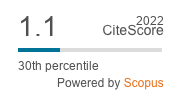Baños de Apoquindo: Caracterización, hidroquímica, modelo hidrotermal y alternativas de aprovechamiento
Keywords:
Apoquindo, Hidrotermal, HidroquímicaAbstract
Apoquindo Baths: Gen etic and hydrothermal characterization, ltydrothermal model and alternative uses. This study pro vides hydrogeologic data in relution to aparticular underexploited and largely unknown Chileau hot spring: Apoquindo Baths locatedat the lowersection of the LosAlmendros ravine.inLasCondesCounty. MetropolitanRegion. Geneticalty: thespring is related to the PocuroFault Zone.Availublestudiesindicate thut ApoquindoBath swere activelyexploitedbetween 1890 and 1942. Apoquindo Baths contain hypothermal, neutral calcic-magnesic-sulftuic cliloride waters. Temperature and chemical data collected over a periodofapproximately 110years indicate,onthewhole, thatthethermalwaters are ver)'stable with scarce variation in tlieir thermal and chemical nature. The present outflow obtained by means of a rustic capture system. corresponds to 3.3 liters/sec. with mean annual temperatures in the range of 10 22o C. The opportune location of Apoquindo Baths. cJose Santiago. together with the physicochemical characteristics of their waters should stimulate fu rther detailed studies and/or investments int ended /O improve their utllization beyond the cu rrent minimal level.
Downloads
References
AMERICAN GEOLOGICAL INSTITUTE ( 198 0) : Glossary ofGeology. Second Edit ion (R. L. Bates; J. A. Jackson, editors), 750 pp. U.S.A. BRUGGEN, J. (1950): Geología. Editorial Nascimento, 495 p.
CARTER, W.D.; L. AGUIRRE (1965): Structural Geology of Aconcagua Province and its relationship to the Central Valley graben, Chile. Geological Society of America Bulletin, Vol. 76; N° 6, pp. 651-664.
CUSTODIO, E.; M.R. LLAMAS (1996): Hidrología subterránea. Tomo 1. Ediciones Omega, 1157 p. Barcelona.
DARAPSKY, L. (189 0): Las aguas minerales de Chile. Imprenta Universo de G. Helfmann, 193 pp. Valparafso.
DE GRYS , A. (1965): Some observations on hot springs of Central Chile. Water Resources Research, Third Quater, Yol. 1: 3, pp. 415-428.
DOMEYKO, 1.(1871): sobre las aguas termales de Chile. Anales de la Universidad de Chile, Vol. 2, pp. 221-260. Sant iago .
DOMEYKO, i.. M.J. DOMINGUEZ (1866): Las aguas termales de Apoquindo. Imprenta del Ferrocarril, pp. 50 a 54. Santiago.
HAUSER, A. (1987): Baños de Apoquindo: una alternativa para optimizar su aprovechamiento. Subdirección Nacional de Geología. Ser vicio Nacional de Geología y Minería; 17 pp. Santiago, Chile (In forme inédito ).
HAUSER, A.(1995): Carta hldrogeol áglca de Chile. N° 2, Hoja Talca. Servicio Nacional de Geología y Minería, 73 pp.
HAUSER, A. (1997): Catastro y caracterización de las fuentes de aguas minerales termales de Chile. Servicio Nacional de Geología y Min ería, Boletín 50, 89 pp. Santiago, Chile.
INGENIEROS CONSULTORES (IPLA) -DIRECCION GENERAL DE AGUAS (DGA) (19 85): Balance hidrológico nacional; Regiones V, VI, VII Y Metropolitana. Ministerio de Obras Públic as, Dirección General de Agu as (Informe inédito) , 96 pp.
INSTITUTO GEOGRAFICO MILITAR (1985): Geografía de Chile: Climatología, Tomo 11, Vol. 3, 2 15 pp. Santiago.
LLAMAS, R. (1992) : Caracterización hidrogeol ágica de las agua s minerales y minero medicinales. Jorn adas de aguas minerales y minero-medicinales en España, Instituto Tecnológico Geominero de España, pp. 2-3 a 2-11, Madrid.
MIQUEL, J. (1851): Medicina. Aguas termales i minerales templadas de Chile. Anales de la Universidad de Chile. Enero-febrero. Imprenta Chilena: pp. 336340.
NETOPIL, R. (1971): Ke klasifikaci premenu podle variabiiity vydatnasti (The classification of water springs on the basis of the variability of yield s). Sbornik-Hydrological Conference, Papers, Stud Geogr, 22, pp. 145-150.
PADILLA, H.; M. VERGARA (1985): Control estructural y alte ración tipo cambio geot érmico, en los intrusivos subvolc ánícos de la Zona Cuesta Chao cabuco; Baños de El Corazón; Chile Central. Revista Geológica de Chile, 24, pp. 3-17.
RISOPATRON, L. (1924): Diccionario Geográfico de Chile. Imprenta Universo , 960, pp. Santiago.
RYBACH, 1. ( 1995) : Thermal waters in deep alpine tunnels . Geothermics, Vol.24, 5-6,pp.631-637.
TELLO, E. (1996a): Geoquímica de Manantiales Termales de la Zona de San Antonio El Bravo, Chihuahua. México. Revista Geoterrnia, Comisión Federal de Electricidad, Vol. 12, N° 2, pp. 85 92. México D.F.
TELLO, E. (1996b) : Geoquimica de los Manantiales Termales de la Zona de Piedras de Lumbre. Chihuahua. México. Geotermia, Revista Mexicana de Geonergfa, Vol. 12, pp. 33-4 I. México D.F.
THIELE, R., (1980): Hoja Santiago. Servicio Nacional de Geología y Minería. carta Geológica de Chile, 39, 51 pp. Santiago, Chile.
TORNERO, R.S. (1872): Chile ilustrado, IV, Aguas Minerales de Chile. Librerías y Agencias El Mercurio, 20 pp. Valparaíso, Chile.
WALL, R.; D. SELLES: P. GANA (En prensa): Mapa Geológico del área de Tiitil-Santiago, Región Metropolitana. Servicio de Geología y Miner ía (Chile). Mapas Geológicos. Santiago.






